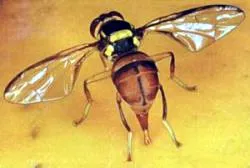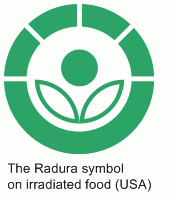 Phytosanitary measures are regulations to prevent the introduction or spread of quarantine pests. Currently, the most used phytosanitary measures involve extreme temperatures and fumigants (methyl bromide fumigation).
Phytosanitary measures are regulations to prevent the introduction or spread of quarantine pests. Currently, the most used phytosanitary measures involve extreme temperatures and fumigants (methyl bromide fumigation). Hallman's review (2011) describes the use of irradiation as a phytosanitary measure to overcome quarantine barriers to trade in mostly food but also non-food items. The history, the present use of irradiation, and its future applications are discussed.
Ionizing irradiation differs from all other treatments in one important technical consideration: the end of the treatment is not the total mortality but the prevention of further biological development and reproduction of the pests. During the inspection of commodities, pests may be found alive, although they will not complete the development or reproduce, this aspect combined with the lack of an independent verification of treatment efficacy obstruct both the technological development and the regulation of irradiation as phytosanitary treatment. Even if researches testifying the irradiation use to interrupt the pest development and reproduction go back to the beginning of 20th century.
 Currently, sweet potatoes and exotic fruits (mangoes, guava, lychee, rambutan, papaya, citrus, banana, etc.) are irradiated in six countries to control quarantine pests. USA and New Zealand import these products, which must carry the label "treated with radiation" or "treated by irradiation".
Currently, sweet potatoes and exotic fruits (mangoes, guava, lychee, rambutan, papaya, citrus, banana, etc.) are irradiated in six countries to control quarantine pests. USA and New Zealand import these products, which must carry the label "treated with radiation" or "treated by irradiation". The increase of irradiated commodities market has let to identify the possible generic doses that might provide control of various quarantine pest groups: 100 Gy for Whiteflies and Aphids, 250 Gy for Thrips, 350 Gy for Lepidoptera pupae, mites, and arthropods.
Compared to the other phytosanitary measures, the irradiation treatment is the most tolerate by the majority of fresh commodities, it allows to treat also the containers of fruits without leaving residues. However, the irradiations application is not accepted by organic farming, and its commercial use has not reached an optimum economy of scale because of the lack of facilities, of their cost, and of their current inability to be feasibly located in the packinghouse.
Original study: Hallman G.J. "Phytosanitary Applications of Irradiation", Comprehensive Reviews in Food Science and Food Safety, 2011, Issue No. 10, pagg. 143-151. For more details: onlinelibrary.wiley.com/doi/10.1111/j.1541-4337.2010.00144.x/pdf
